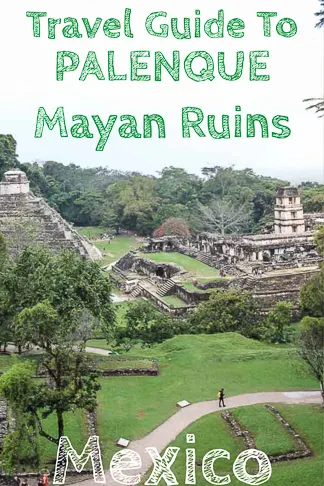There is a lot that makes Mexico fascinating, but the history and culture that can be found in the ruins of the past are perhaps the most interesting.
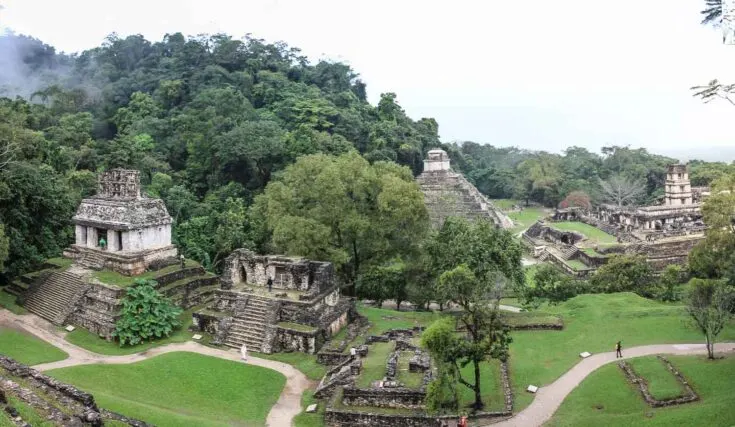
The Palenque Ruins are not the largest site of this nature, but it may just be your favorite.
The architecture, sculpture, and intricate roofs are some of the most impressive that the Mayan civilization created. Walking through the monuments, temples, and homes will leave you awe-struck and inspired.
So if you’re looking for the best places to visit in Mexico, add this one to the list.
Keep reading to find out all about the history of Palenque, its fascinating facts, and what to see when you visit.
Facts About The Palenque Mayan Ruins
Mayan civilization has long inspired a thirst for knowledge – we want to know how they did what they did and why. While these questions may be open to interpretation, these facts about Palenque will shed some light on your curiosities.
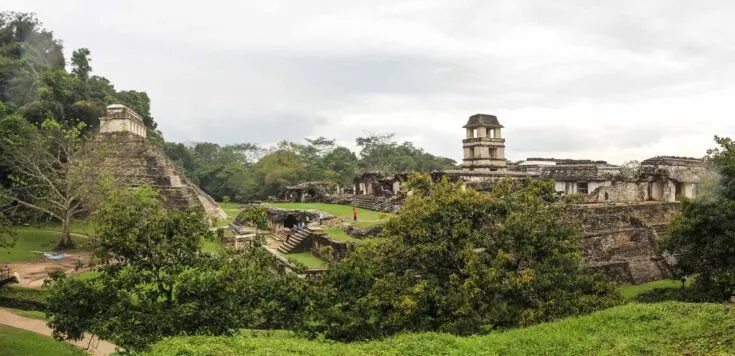
Not All of The Ruins Are Uncovered
This fascinating site has not yet revealed all of its secrets and hidden places. It is estimated that thousands of structures are still covered by the jungle. So while the Palenque Ruins are considered a medium-sized site, it may, in fact, be much larger than we imagine.
Currently, there are approximately 1,400 documented buildings belonging to the compound. However, less than 10% of these have been excavated, which certainly sparks the imagination.
Palenque is Smaller Than Chichen Itza
Though it is no less impressive, the Palenque ruins are by no means the largest site of Mayan ruins. Chichen Itza, located on the Yucatán Peninsula, survived for longer than Palenque.
This is perhaps why it is a larger compound, with more massive structures.
Palenque is a UNESCO World Heritage Site
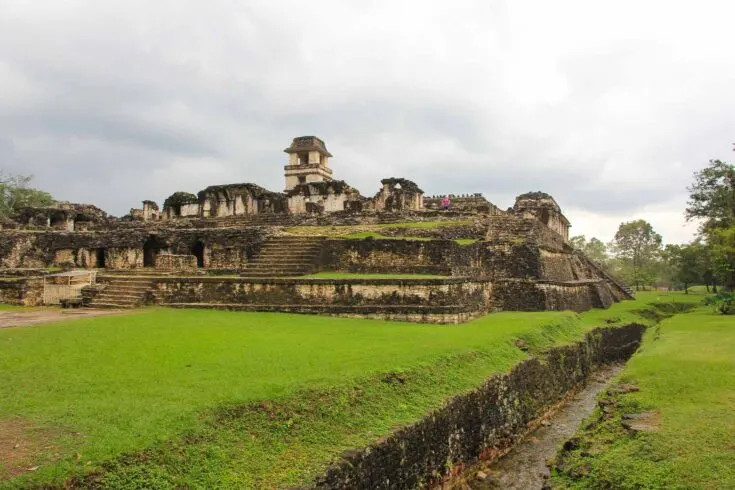
Unsurprisingly, this impressive historical compound is listed as a UNESCO World Heritage Site.
Demarcated as a protected site, this status will help conserve the ruins for future generations.
Palenque is Important Because of Extensive Hieroglyphics
Some of the most detailed and extensive information on Maya civilization can be found on the walls of these ruins. The hieroglyphics tell meaningful stories and express the history of the civilization, which has allowed historians to piece together what happened here.
Making these ruins incredibly valuable for understanding the past and the culture of these people.
History of Palenque Chiapas
Palenque has a long history, stretching across millennia. The oldest buildings date back to about 226 BC, and the city is estimated to have been abandoned in 799 CE.
Since Palenque has much of its history etched into its walls, we know that the first recorded king reigned from 431 CE. The most famous and influential king of Palenque, however, is Kinich Janaab Pakal, also known as ‘Pakal the Great’.
Pakal reigned from 615 CE until his death in 682 CE. Impressively, he lived to be 80 years old. Infinitely more impressive is the fact that Pakal created a dynasty that, with the succession of his son and grandson, elevated Palenque to one of the greatest Maya cities.
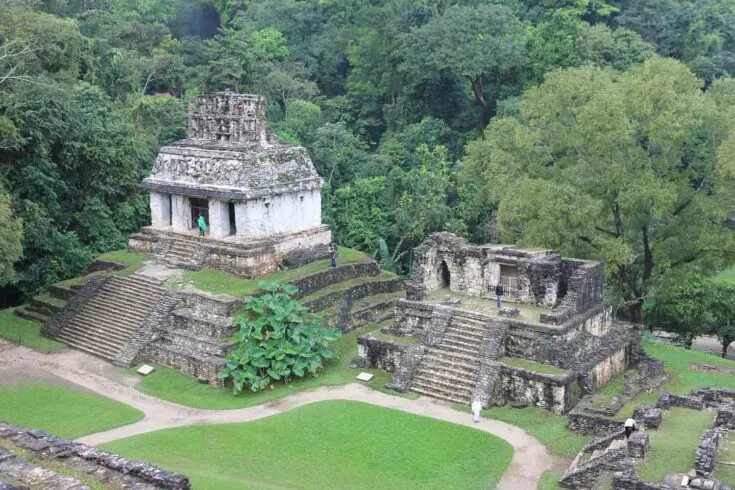
It was during his reign that the construction of the Temple of Inscriptions began. His son’s reign saw the creation of the Temple of the Cross Complex.
Unfortunately, Palenque’s downfall was not far behind. Perhaps because of their growing wealth, hostilities broke out with neighboring cities, and the city was abandoned around 800 CE.
This was a common exodus for Maya cities, as can be seen, by the Monte Alban ruins having been left at a similar point in time.
Things to See at Palenque in Chiapas, Mexico
Wandering around the compound is enough of an adventure for many, but there are a few noteworthy landmarks to keep an eye out for.
Taking a guided tour is recommended, as it’s great to gaze around while hearing the stories and histories of the monuments.
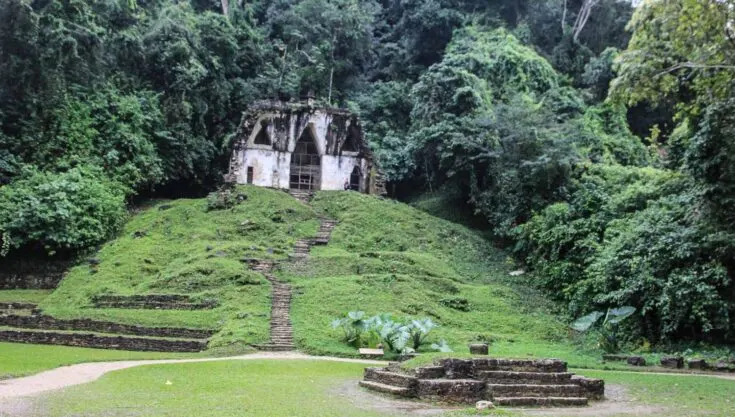
The Palenque Palace
One of the most complex structures of the entire Maya civilization, this palace is one for the books. It is also noteworthy because it is the only royal residence that characterizes a Maya city more than a religious temple.
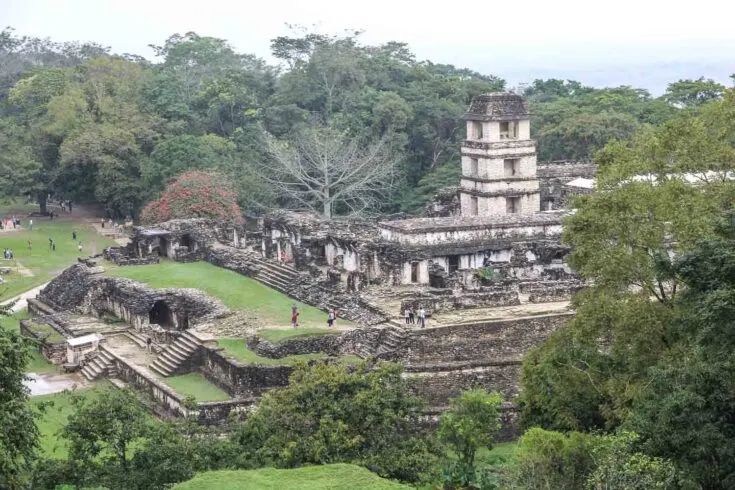
The palace is set above all else, on a 10-meter high platform. Since it was used as a royal residence as well as to accommodate nobles, military personnel, and servants, it is mainly comprised of rooms.
These are cleverly arranged around courtyards, galleries, and a four-story tower that is unique to Mesoamerican architecture.
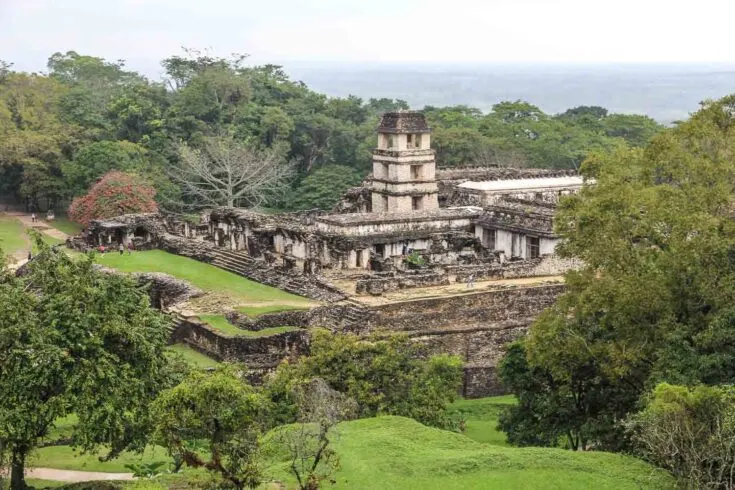
While it won’t be visible when you visit, the palace was once decorated in bright colors. When you look upon the stone walls and the relief sculptures, imagine them painted in red, yellow, and blue.
Temple of The Inscriptions
This wonderful monument serves two important functions. The walls contain a hieroglyphic history of 180 years, and the temple served as the tomb of Palenque’s greatest ruler, Pakal.
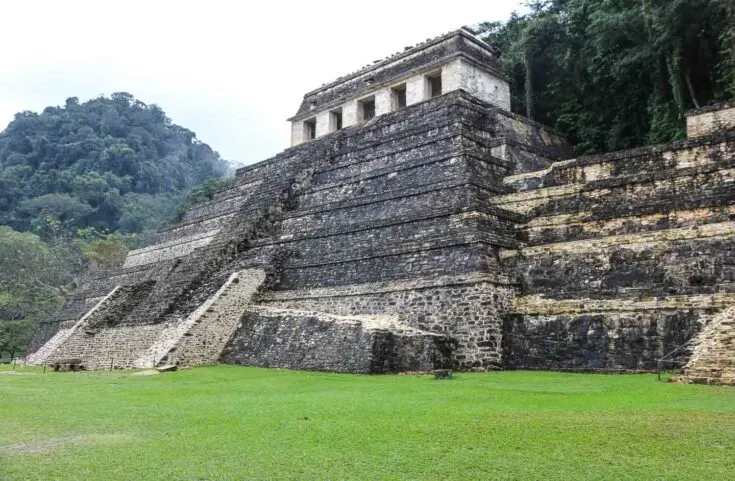
This temple is the largest stepped pyramid in Palenque. Its construction began in the last decade of Pakal’s life and was continued during his son and successor’s reign.
When it was excavated, archaeologists discovered Pakal’s sarcophagus, with an intricate jade mask and jewelry to accompany him to the afterlife.
This proved that these Mesoamerican pyramids were also created as tombs, much like the Egyptian pyramids.
Access can change according to preservation needs, but currently, this is one of the few temples where you can see the burial chamber.
However, even seeing the temple from the grassy grounds is a truly memorable experience.
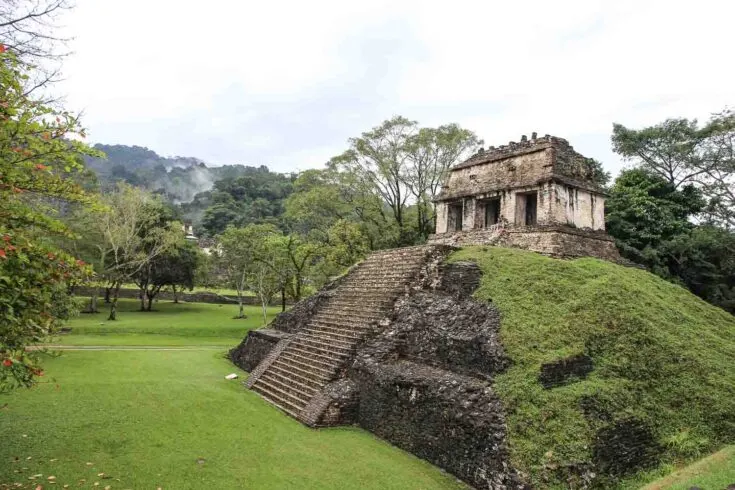
Temple of The Cross Complex
Designed by K’inich Kan Bahlam to commemorate his succession to the throne after Pakal, this complex is dedicated to the patron gods of Palenque.
There are three temples – The Temple of the Sun, The Temple of the Cross, and The Temple of the Foliated Cross.
In Maya symbolism, the cross is representative of the World Tree, which is found at the center of the world according to Maya mythology.
When exploring these temples, take note of the abundant symbolism carved into the walls.
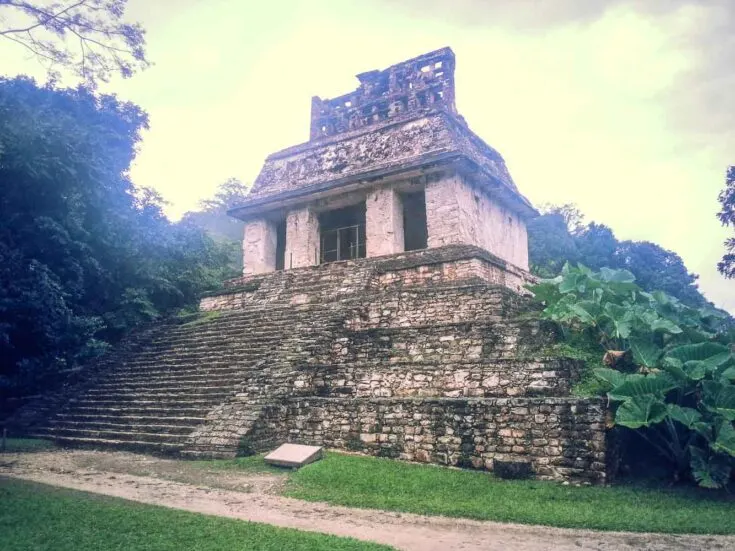
Palenque Mayan Ruins | Frequently Asked Questions
There is so much to know about these ruins, that it likely sparks a number of questions. Here are the most common questions about the ruins, and their answers, so you can learn a little more.
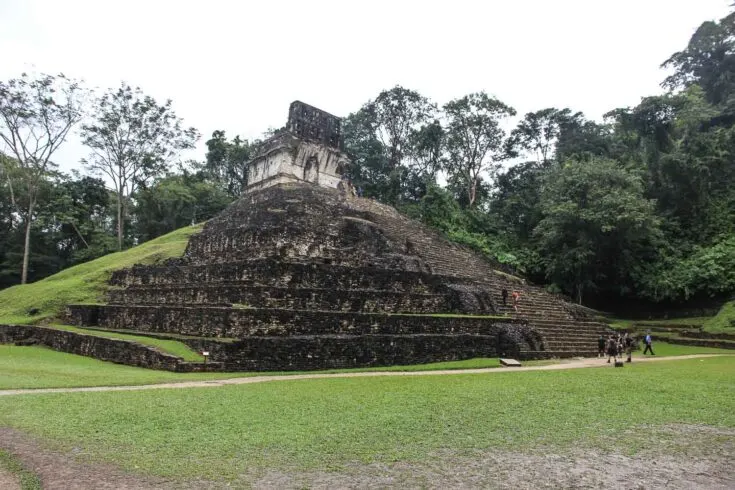
What is Palenque?
Palenque is an ancient Maya city-state in the South of Mexico. Known anciently as Lakamha, the ruins here date back from 226 BC to about 799 CE.
This means that the city thrived for over one thousand years, an impressive period of time for any civilization.
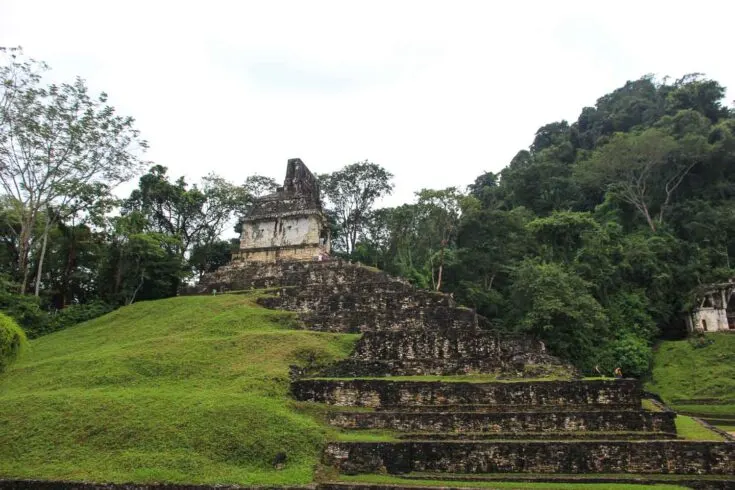
Who Built Palenque?
The Mayans that lived there built the city over three distinct periods.
The specific architects are unknown, though their work shows that they were some of the most innovative and creative in the history of their field.
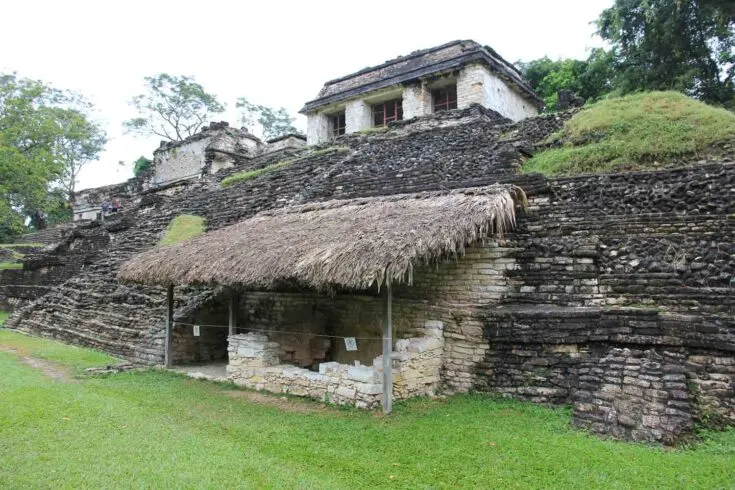
The periods of development are divided into the Early, Middle, and Late Classic period. The middle period saw larger and more complex designs come to life.
The Late Classic period, instead of continuing this trend, was focused on the construction of fortifications and defense, which is indicative of their ensuing troubles and the abandonment of the city.
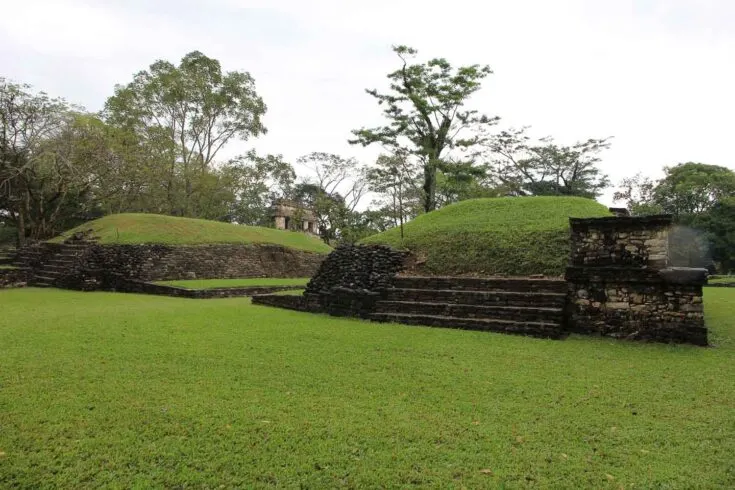
How Was Palenque Built?
The city settlement is built according to the terraced contours of the terrain. Cleverly, the city has three different levels, allowing for better use of space, the flow of water, and other practicalities.
Palenque was one of the most densely populated Mayan cities, so this was particularly useful.

What is particularly incredible about this architectural marvel is that it was built before the wheel was around. So everything was built without the use of that all-important invention.
There was also no use of pack animals or metal tools during this era, making its construction all but unbelievable. This is perhaps where the alien conspiracy theories sprout from.
Where is Palenque Located?
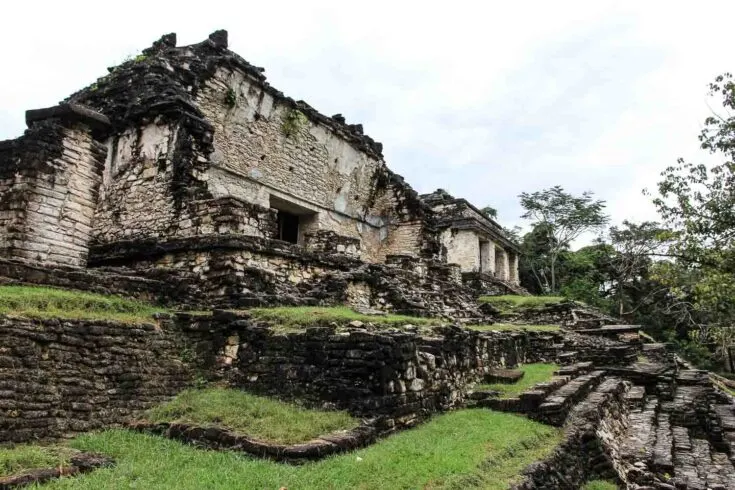
The Palenque ruins are located in the South of Mexico, in Chiapas, a Mexican state. Found on the Tumbalá mountains, where the highland and coastal plains meet, the site is elevated and overlooks the lush green jungle below.
The settlement also includes the Usumacinta River, which is believed to have been used for transport by the Mayans. The river had a number of advantages, as it placed Palenque on trade routes with other settlements, aiding the city’s growth and power.
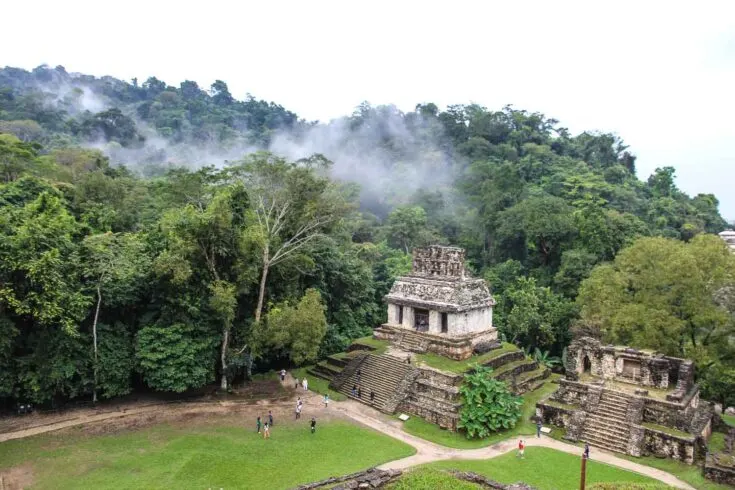
The Usumacinta River and its tributaries were also rerouted into man-made canals throughout the city. Archeologists have discovered that one of the main aqueducts, a 50m long canal that crosses through the city, was pressurized.
This would be the first of its kind, making this civilization truly ahead of its time. Like we needed more convincing.
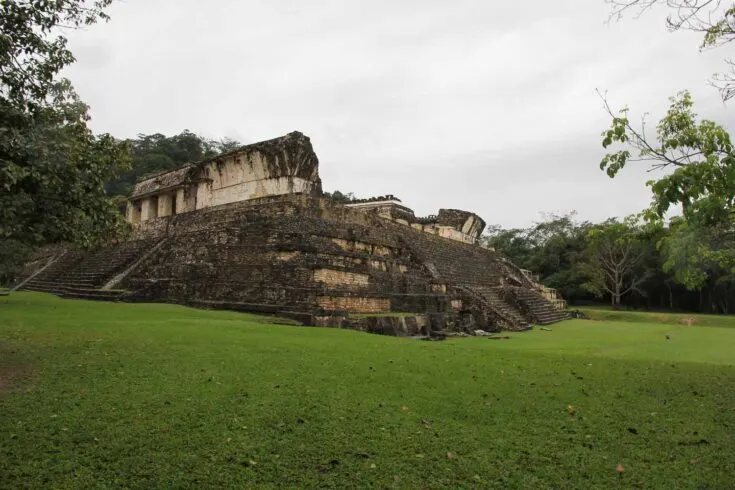
Ready to Visit the Palenque Mexico Ruins?
Palenque is a wonderful place to visit if you want to get a good idea of the truly impressive capabilities of a people group that lived thousands of years ago.
Walking across the grounds and the living spaces that were occupied so long ago is an eerie feeling that you won’t soon forget.
Now that you know all about the wonderful ruins of Palenque, planning a trip will be a breeze. If you have the time, try to fit the Tulum ruins into your itinerary, as ruins never get old (see what I did there?).
